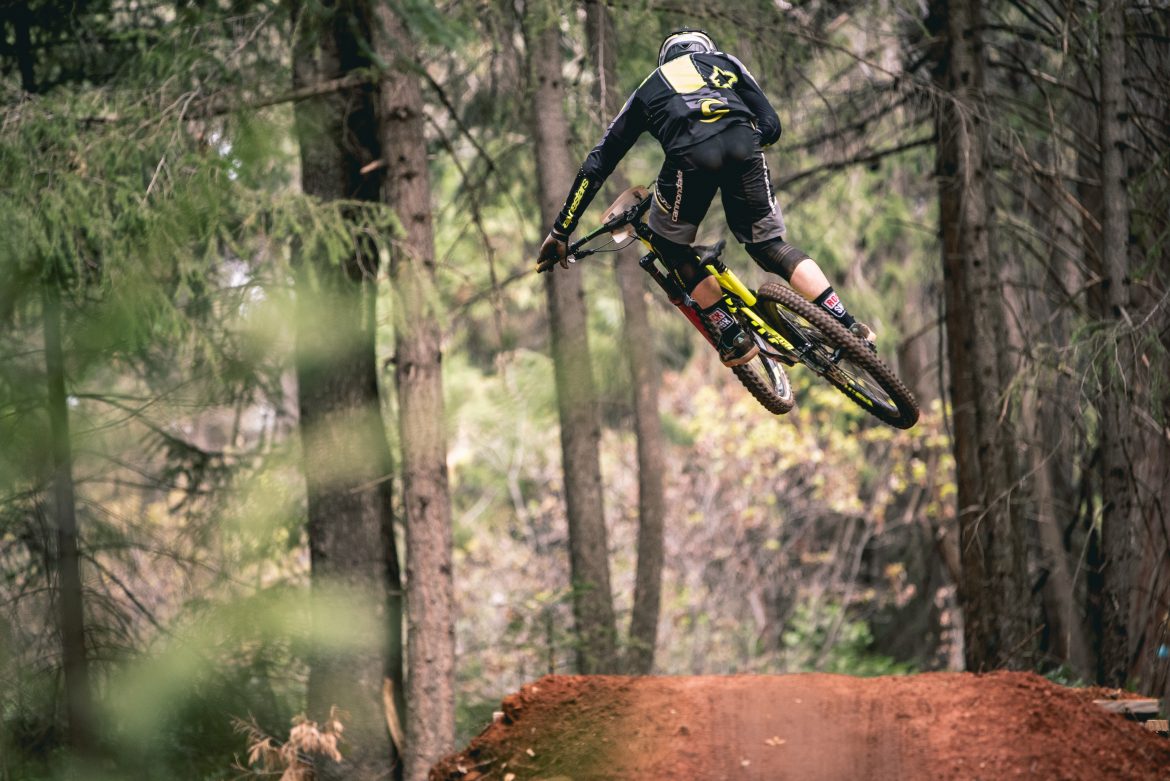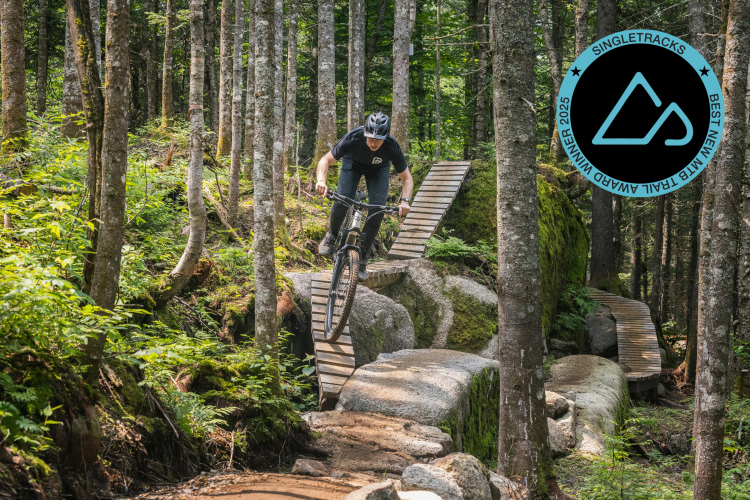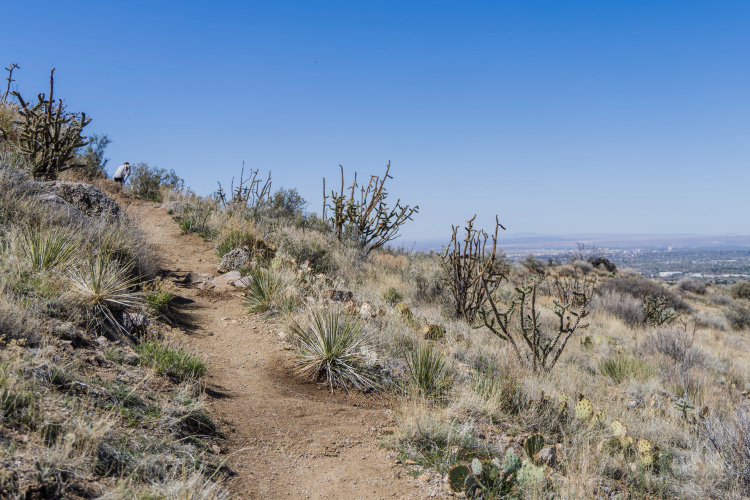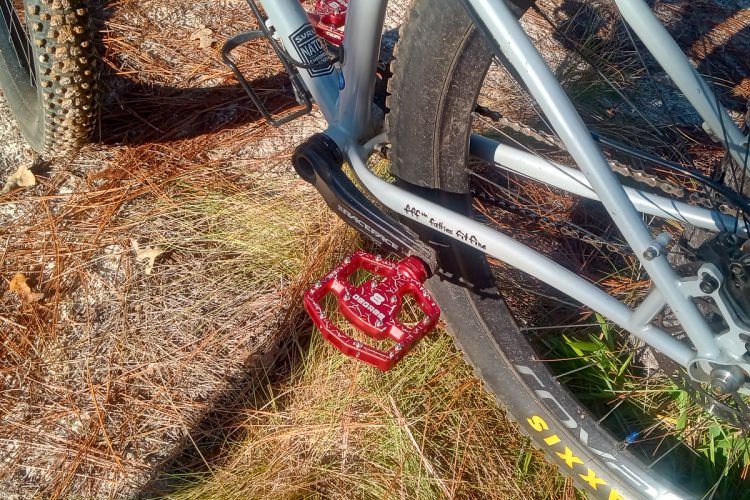
Long before that first Enduro World Series race in Punta Ala, Italy, gravity athletes were pinning it down hills in similar formats like the Megavalanche in Europe and Super-D in the US. Enduro racing officially kicked off with the Tribe 10,000 event in 2003, and over the following ten seasons events like Enduro Series France provided the training for athletes who would go on to win the first EWS in 2013. Check out our article on the history of enduro for the full story.
The elite men’s champion in that first EWS season was France’s Jerome Clementz. After racing DH and cross country as a kid, Clementz decided to give the World Cup downhill racing scene a try. While the single-day speedway between the trees was fun, he had on eye toward a different sort of gravity fun. He says that the trails along the border of France and Switzerland where he lives are of the natural and physical variety, making them better for Magavalanche-style training.

All that gravity training paid off with a win at “The Mega” in 2005 that would significantly boost his career and confidence. The punishing “mass start enduro” begins on a glacier at 3,300m of elevation on the Alp D’Huez ski resort, with a finish line down at 2,600m. Between those two points, athletes tuck tightly to fly down chunky ice, across boulder fields, and into some notably tricky singletrack. There’s a fair bit of pedaling mixed with the arm pump, and anyone who can win a Mega is arguably ready for a weekend of EWS racing.

All of those early races took place before dropper posts existed, and Clementz says that he would string zip ties between the frame and saddle rails to quickly find the right height for the longer pedaling segments of the Mega. The first dropper posts he tested were prototypes made by someone in a garage, and he says that there were definitely some issues with them out on the trail. One particular post malfunction left him descending a massive stage with no saddle and just the metal tube between his legs.

Dropping the saddle is one thing, but Clementz says that frame geometry and robust components are two invaluable innovations he’s seen over the years. In the early days the riders were often bolting lightweight cross-country components to their bikes that would implode, leaving several of them with mechanicals at the end of each stage. The bikes weighed around 13kg back then, and now that components have caught up with the rigors of daylong gravity racing most of them tip the scale at closer to 15kg. While that added weight requires a little more fitness to pedal uphill, we’re seeing far fewer busted bikes and race-ruining mechanicals today.

In addition to winning the Megavalanche and the premiere EWS season Clementz maintained a passion for multi-day races that combined the adventure of enduro with a deeper level of endurance. He has achieved top results at the Trans-Provence, Crested Butte Ultra Enduro, Trans BC, and Trans New Zealand to name a few, and he credits that success to his preference for new and unknown trails. Clementz said that since he started racing he has always looked for new trails, and traveled the world checking out new places to ride. Consistently pushing the pace on diverse and unknown trails helped him develop the skills to go fast while racing under similar conditions.
One of the main logistical shifts in enduro that Clementz mentioned is the solo practice-run regulation. Riders are limited to seeing the track one time, though they can watch footage from their action cameras as many times as they like. The idea is to maintain the wild and adventurous spirit of enduro, where folks need to react quickly and focus unequivocally. Clementz said that prior to this rule athletes would ride the tracks as many times as they could, and the sport was becoming more like downhill where the riders knew every last rock. Apart from the occasional local racer, this piece of the format levels the field so that everyone is riding somewhat on-sight.
Another element of enduro that shifted over the years is the recorded time gaps between riders. Clements said that in the beginning, he would feel uncomfortable with less than thirty seconds between himself and the next athlete, whereas now the gaps are down to split seconds. According to Clements, tighter racing means that you have to be 100% on your game without exception. Where he once could charge with a consistent level of risk and high speed, the top riders today are sometimes on slightly slower and tougher tracks with zero room for error from top to bottom.

Clementz rode with the Cannondale team for over ten years, slowly transitioning toward a different role during his final two seasons while still racing at the top level. The young Frenchman knew two things about his midlife racing career: he wanted to quit on his own terms rather than waiting to slow down, and he wanted to do something different once the final contract was up. He had already experienced the challenge of riding at the top level, and wasn’t interested in switching to e-bike racing or being an influencer as some former pros have chosen.

Clementz also realized that his racing and team management experience had taught him a great deal about marketing bikes and how to get folks excited about riding. He brought that story to Cannondale (Cycling Sports Group) management to see if they needed his desk and people skills after his athletic ones had been retired. Over roughly the next year they created a position for him that fit with the brand’s needs and his talents. Clementz now works as the European MTB Coordinator for CSG, sharing the news of new models and making sure that ambassador athletes are supported and journalists receive the bikes we need for testing and review. He’s stoked on the new challenges this position brings and enjoying learning to best support the next generation of fast athletes.

You can follow along with Jerome Clementz via his YouTube channel where he shares exciting ride features from around the world.







0 Comments